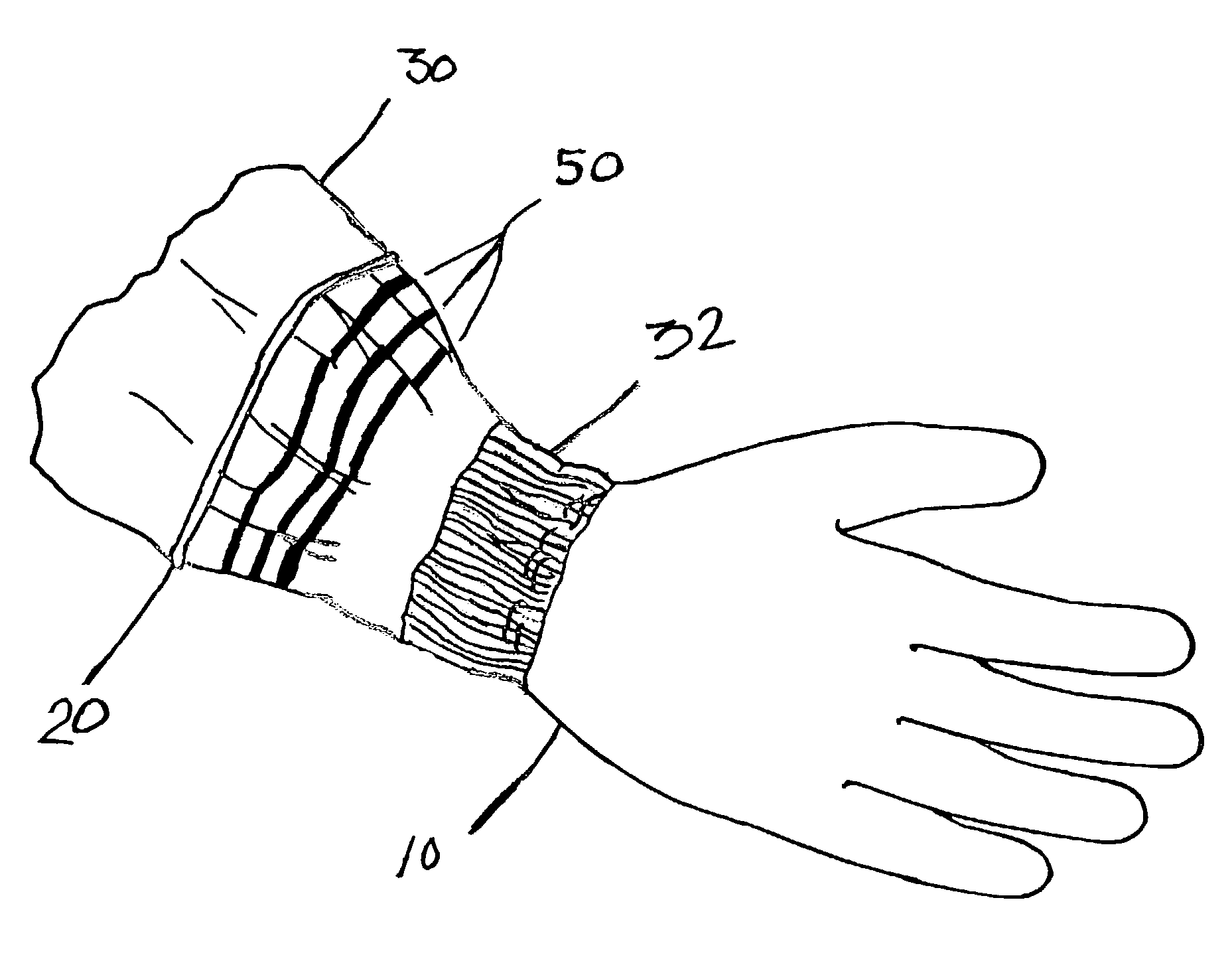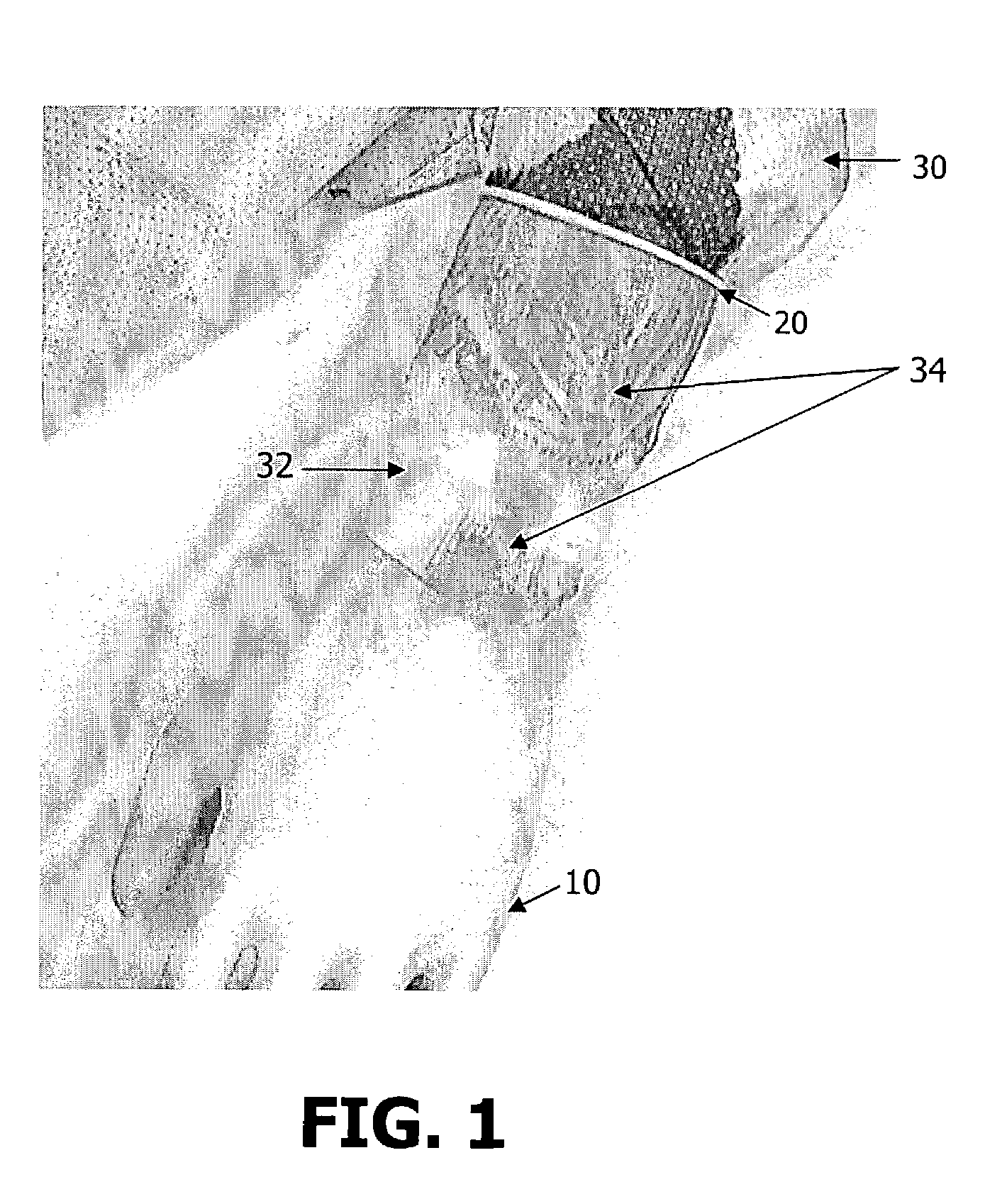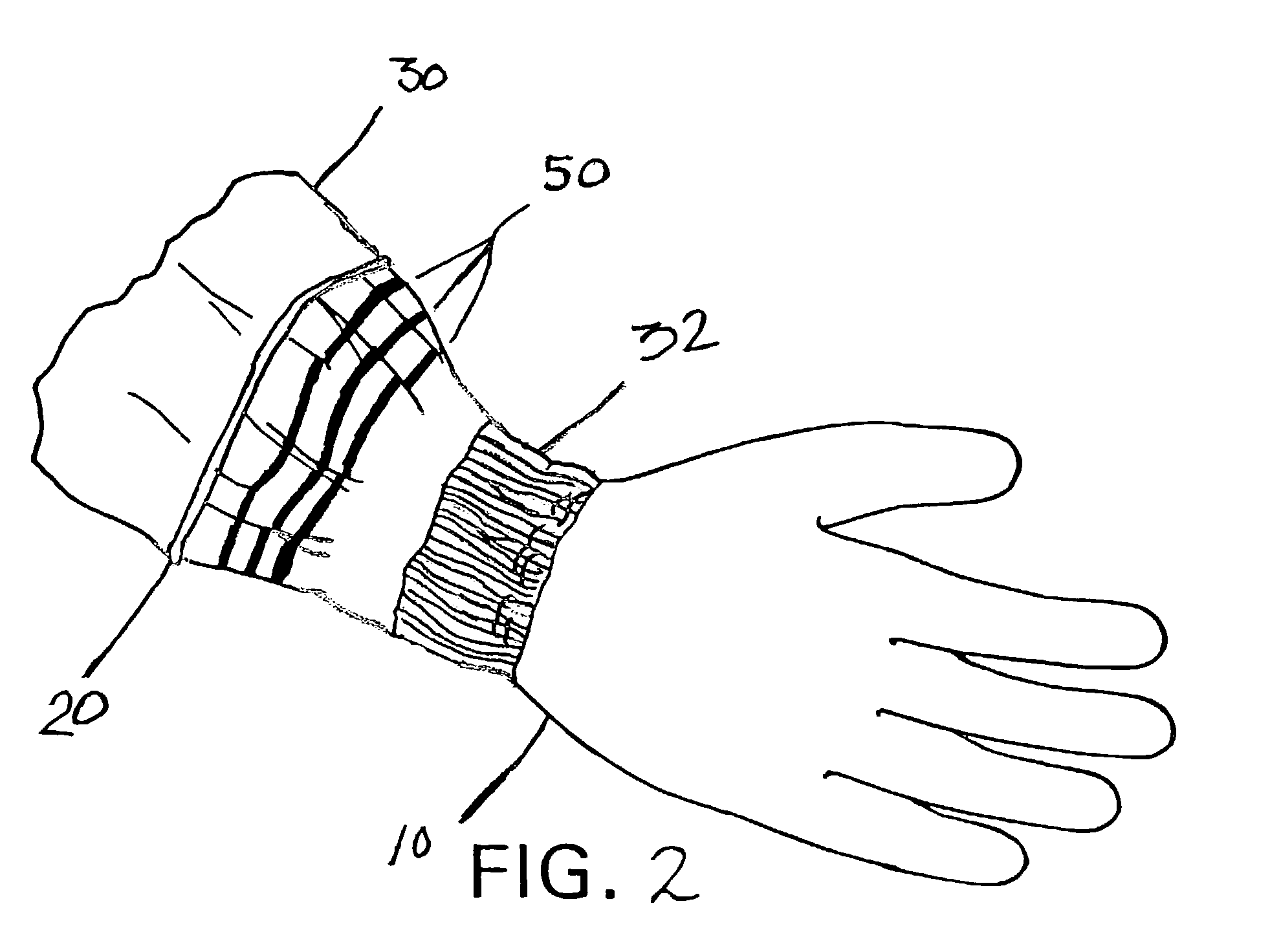Anti-wicking protective workwear and methods of making and using same
a workwear and anti-wicking technology, applied in the field of protective workwear, can solve the problems of garments often being uncomfortable to wear, materials being uncomfortable to wear, garments often being uncomfortable, etc., and achieve the effect of low surface tension and low surface tension
- Summary
- Abstract
- Description
- Claims
- Application Information
AI Technical Summary
Benefits of technology
Problems solved by technology
Method used
Image
Examples
example
Material Example
[0102]In an example of the structure and method of making the structure, a line approximately one quarter inch across that tapered to one sixteenth of an inch across was produced on nonwoven medical gown material using a hot melt wax ink with a melting point of 125° C. and a Spectra Nova piezo-crystal printhead. (the GALAXY PH 256 / 80 HM) In particular, the material was cut from a roll of fabric (MicroCOOL, available from Kimberly-Clark Corporation, Roswell, Ga.) using a hydraulic press. The fabric described above in detail and in U.S. Pat. No. 6,037,281 was a three-layer laminate of spunbond material (SB), breathable film, and an SMS laminate. The body side or inside surface of the fabric was a 0.75 osy SMS and the exterior or outside surface was a 0.6 osy SB both made of polypropylene. The middle layer of the laminate was a cast film consisting of polypropylene skins and a linear low density polyethylene (LLDPE) core all filled with CaCO3 and stretched to generate m...
PUM
| Property | Measurement | Unit |
|---|---|---|
| Thickness | aaaaa | aaaaa |
| Width | aaaaa | aaaaa |
| Thickness | aaaaa | aaaaa |
Abstract
Description
Claims
Application Information
 Login to View More
Login to View More - R&D
- Intellectual Property
- Life Sciences
- Materials
- Tech Scout
- Unparalleled Data Quality
- Higher Quality Content
- 60% Fewer Hallucinations
Browse by: Latest US Patents, China's latest patents, Technical Efficacy Thesaurus, Application Domain, Technology Topic, Popular Technical Reports.
© 2025 PatSnap. All rights reserved.Legal|Privacy policy|Modern Slavery Act Transparency Statement|Sitemap|About US| Contact US: help@patsnap.com



